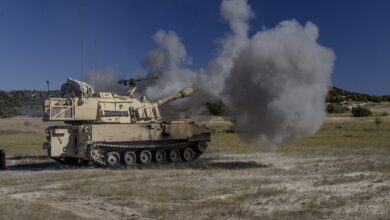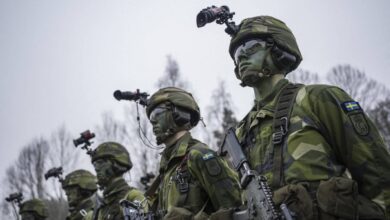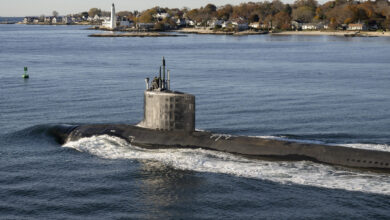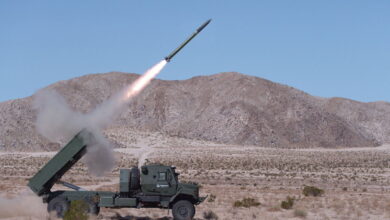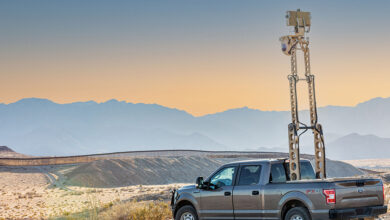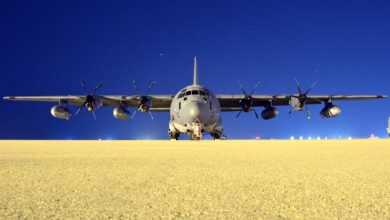
By Sirous Amerian
Iran has been at the center of world news in the past decade or so, with its nuclear program being the focus of attention. With that issue put to the side, at least temporarily, by the signing of the Joint Comprehensive Plan of Action three years ago, one would have expected Iran to lose its place as the center of attention, which hasn’t happened.
After describing the JCPOA as a terrible deal and promising to tear it up once in office, U.S. President Donald Trump has endeavored to keep the spotlight and pressure on Iran. In addition to the nuclear issue, Iran’s presence in Syria and its ballistic missile arsenal are touted as major threats to regional and international security.
Iran has an extensive and complicated arsenal of ballistic missile, including short-range theater missiles such as the Zelzal to longer-range and heavier missiles such as the Shahab-3 or Sejil, which can reach 2,000 kilometers, and come in different models such as liquid or solid propelled. Essentially, ballistic missiles are the key defensive weapon and are at the same time an offensive element of Iran’s strategy, as Tehran has invested a lot of time, manpower and money in developing and improving them. Why would they put them aside under pressure from the U.S. or Europe?
Iran is situated in the Middle East, a volatile region, where it has some friends and many enemies. Its enemies, mainly Saudi Arabia, Israel and the United Arab Emirates, are well-armed, advanced and rich countries that spend extensively to upkeep and upgrade their military capabilities.
Saudi Arabia, according to the latest statistics, is currently the world’s third biggest military spender. At $57 billion, Riyadh outspends countries like India, France, Russia and Japan. Israel stands 14th in the same data and spends around $14 billion a year on its army, while the UAE comes in at 16th by spending around $14.3 billion on its military every year. With $6.3 billion in annual spending, Iran stands at number 33.
In accordance with its stance among military spenders, Iran’s military capabilities are feeble and weak compared to its neighbors. Iran’s armed forces are best described as a walking museum. And that’s in all its three primary branches.
The Islamic Republic of Iran Air Force relies mainly on 40- to 50-year-old American built jets such as the F-14, F-4F and F-5 and a smaller number of Soviet built jets, the Mig-29A and Su-24 – bought around two to three decades ago – which were later reinforced by Saddam Hussein’s jets fleeing the Persian Gulf War.
Compared to Saudi Arabia’s state-of-the-art F-15s and Eurofighter Typhoons, UAE’s Mirages and F-16s and Israeli F-16s, F-15s and the newer F-35s – which all come in high numbers and are armed with the latest radar and missiles backed by modern AWACS capabilities – the IRIAF is a joke compared to its modernized adversaries.
The ground forces and the navy are no different. Many mechanized battalions are armed with T-72s and older generation Soviet tanks, which proved largely ineffective three decades ago against modern Western tanks during the first Gulf War. There has been some progress with upgrades of older tanks with newer equipment and armor, but it has been slow and Tehran hasn’t managed to upgrade all obsolete systems.
On the personnel side, around two-thirds of the ground forces and other branches are filled with conscripts, men aged 18 and over, who are required to do two years of service during which they are under immense pressure: these young men do not receive a fair salary, are humiliated by permanent officers and commanders, and are stationed along borders far from their families, or in cities where they do chores such as cooking and cleaning toilets. Most are not given high-quality food or equipment such as uniforms.
A series of recent shootings by conscripts revealed the ugly face of conscription, which affects the mental health of young men. If you sit and talk with them, a majority of those who have done this service and have come back would not have many fond memories of this period. So one wouldn’t expect high morale or combat effectiveness from them.
Iran essentially does not have the capability to lead an offensive against any country in the region, except maybe Afghanistan, or smaller actors like Kuwait.
The two branches which are newer and receive better treatment and equipment are the missile forces under the command of the Islamic Revolutionary Guard Corps, and the Khatam al-Anbia Air Defense Base. As indicated by its name, the Air Defence Base is a command in charge of surface-to-air systems and is defensive in nature.
But Iran is unlikely to use even the missile force as an offensive element.
Iran’s ballistic missiles are all conventional and not armed with atomic warheads. It cannot use them to fully annihilate any adversary to omit the chance of a retaliatory strike. If used to strike first, these missiles would probably cause wide damage to one or two targets or terrorize people in cities, but couldn’t destroy all the bases and industrial centers an adversary might have.
Iran knows if it goes first and attacks Israel or America’s Arab allies with its ballistic missiles, not only is it inviting the targeted country to retaliate, but it would also give Trump and his new national security advisor John Bolton the needed excuse to move from promoting soft regime change to hard regime change and outright war with Iran. The ayatollahs in Tehran might hate the Israelis and Saudis, but that sentiment is less powerful than their love of power.
So what is the purpose of Iran’s ballistic missiles? They serve both a defensive and deterrent purpose: by maintaining a large number of ballistic missiles ready to strike any country that might go after it, Iran is making a hit on itself more expensive to its adversaries.
Israel, Tehran’s primary enemy, has in two instances attacked Syria and Iraq without prior notice, and was never retaliated against as those countries did not have the capabilities to do so. The same could not happen with Iran as it has the means to retaliate against such an attack. By asking for the removal of Iran’s ballistic missiles, the Europeans and Trump want to declaw a cat and take away from Tehran its only credible defensive option.
Making a strike against Iran less costly and safer for any country in the region is dangerous for the stability of the Middle East. It would make Iran an easy target for anyone with the capabilities and the will, and the Middle East is not short on those actors. Let’s not do that, and learn to live with an Iran armed with ballistic missiles for its own defense.
 Sirous Amerian is a PhD Candidate and Graduate Assistant at the Centre for Defence and Security Studies at Massey University in New Zealand. While in Iran, he worked as a Policy Analyst for the Institute of Iran Eurasian Studies (IRAS). He tweets at @AmerianS.
Sirous Amerian is a PhD Candidate and Graduate Assistant at the Centre for Defence and Security Studies at Massey University in New Zealand. While in Iran, he worked as a Policy Analyst for the Institute of Iran Eurasian Studies (IRAS). He tweets at @AmerianS.
All views and opinions expressed in this article are those of the author, and do not necessarily reflect the opinions or positions of The Defense Post.
The Defense Post aims to publish a wide range of high-quality opinion and analysis from a diverse array of people – do you want to send us yours? Click here to submit an Op-Ed.


